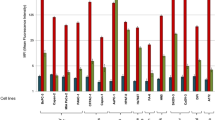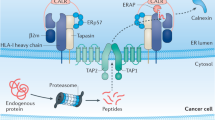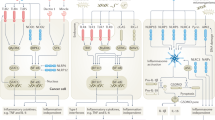Abstract
Murine monoclonal antibodies directed against tumour associated antigens are potentially useful in tumour diagnosis and therapy. However, all the antigens they recognise may be heterogeneously expressed on tumours and this may allow escape of cells from therapy if a single monoclonal antibody is used. One approach is to use combinations of monoclonal antibodies recognising complementary cell surface antigens. A flow cytometric method which allows accurate quantitation of the intensity of staining and the percentage of fresh primary tumour cells binding a series of monoclonal antibodies has therefore been developed. This allows calculations as the number of drug molecules which could be potentially delivered by each monoclonal antibody and the optimal combination of antibodies which should be used. Monoclonal antibodies recognising Y hapten (C14), CEA (228, 161) and 791T-p72 antigen (791T/36) have been screened as a possible combination for colorectal cancer. There was inter-tumour variation in the binding of all the monoclonal antibodies although combinations could reduce or abrogate this problem. A combination of the monoclonal antibodies C14, 228, 791T/36 and 161 would recognise 100% of tumours. Sixty per cent of tumours bound all four antibodies, 78% any three, 90% any two and 100% any one antibody. There was also intra-tumour variation in the number of tumour cells per lesion that were recognised, the best monoclonal antibody, 161, stained a mean of 59% of cells per tumour whereas the anti-cytokeratin monoclonal antibody stained a mean of 74% of cells per tumour. An increased intensity of staining of tumour membranes was observed when a combination of C14 and 228 was used compared to binding of individual antibodies. Furthermore there was still no significant binding to normal colon membranes. Combinations of monoclonal antibodies which recognise a high percentage of tumours are likely to be necessary for monoclonal antibody drug targeting to prevent tumour recurrence and/or metastases.
This is a preview of subscription content, access via your institution
Access options
Subscribe to this journal
Receive 24 print issues and online access
$259.00 per year
only $10.79 per issue
Buy this article
- Purchase on Springer Link
- Instant access to full article PDF
Prices may be subject to local taxes which are calculated during checkout
Similar content being viewed by others
Author information
Authors and Affiliations
Rights and permissions
About this article
Cite this article
Durrant, L., Robins, R., Ballantyne, K. et al. Enhanced recognition of human colorectal tumour cells using combinations of monoclonal antibodies. Br J Cancer 60, 855–860 (1989). https://doi.org/10.1038/bjc.1989.379
Issue Date:
DOI: https://doi.org/10.1038/bjc.1989.379
This article is cited by
-
Targeted kill: From umbrellas to monoclonal antibodies
Journal of Clinical Immunology (1992)



